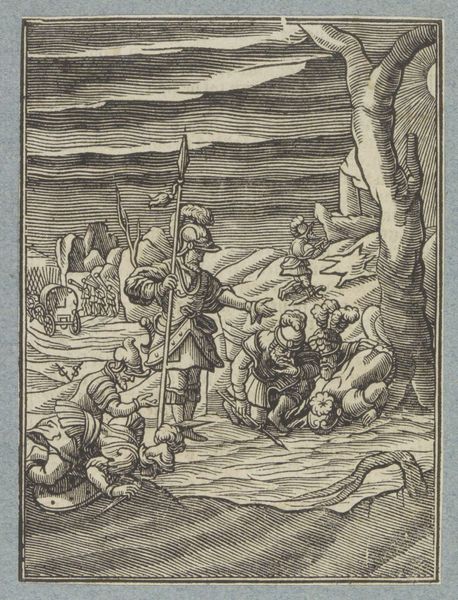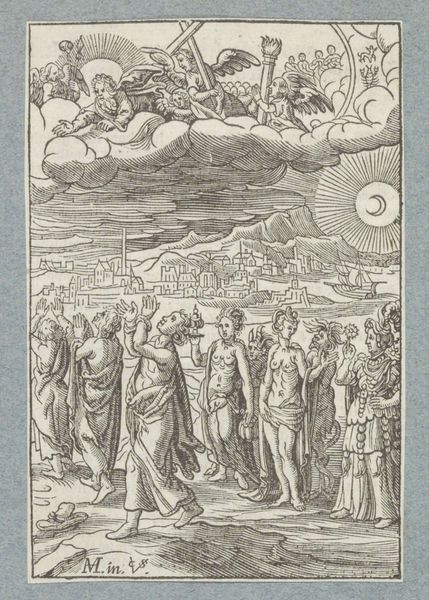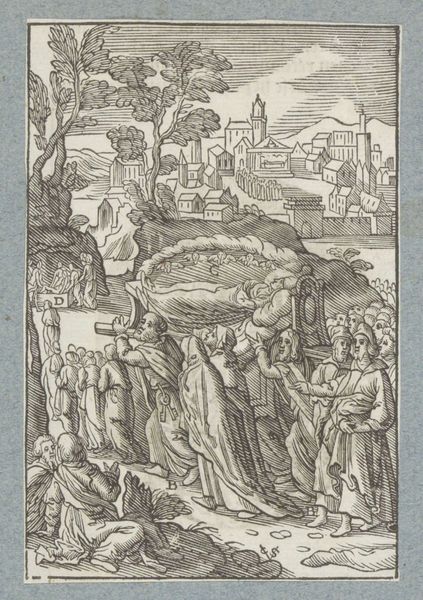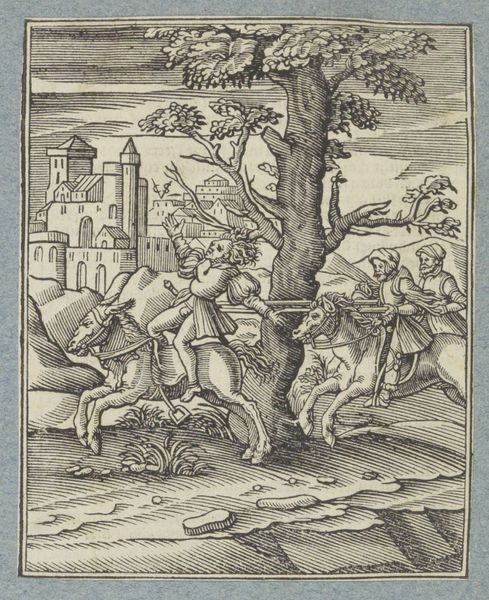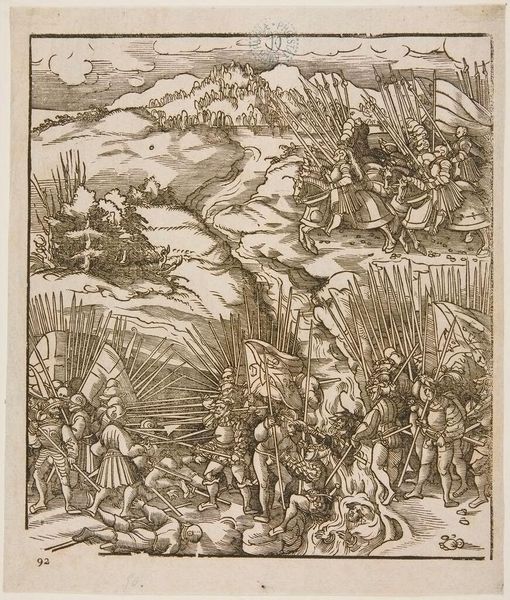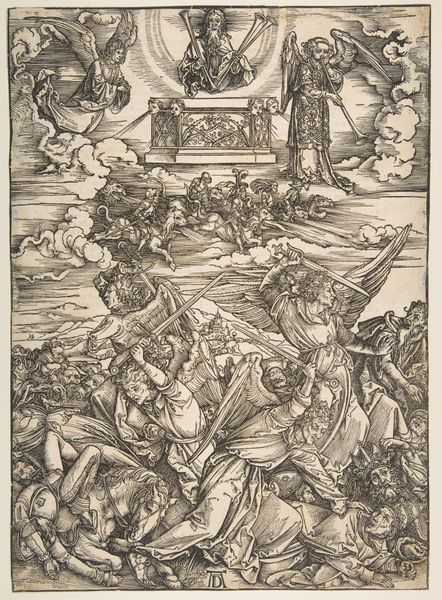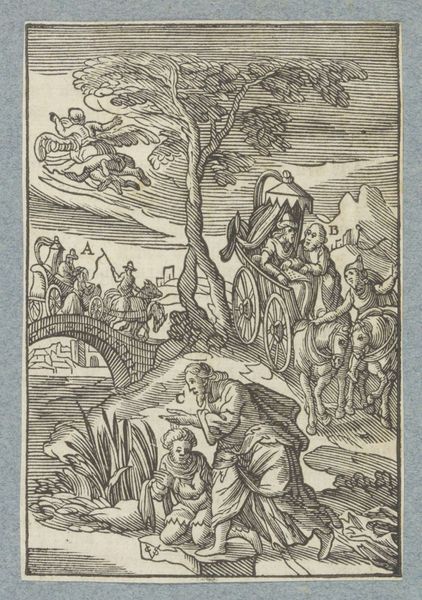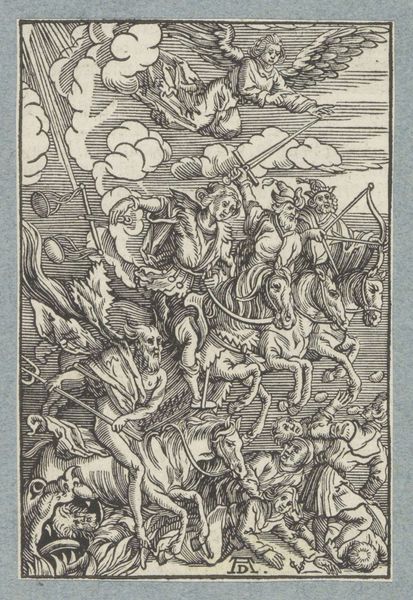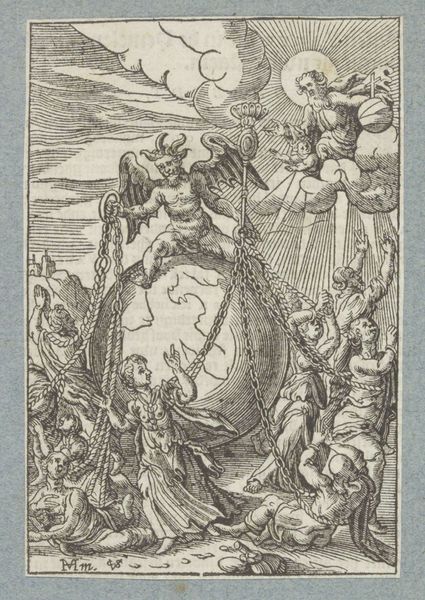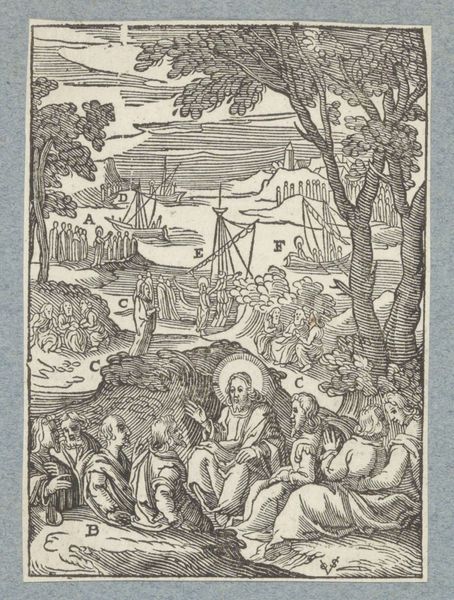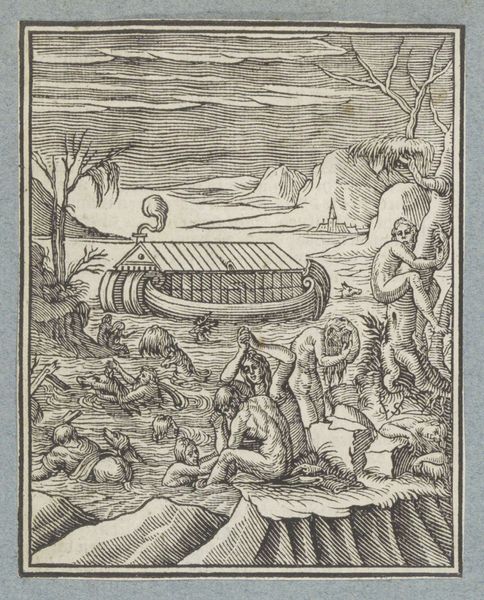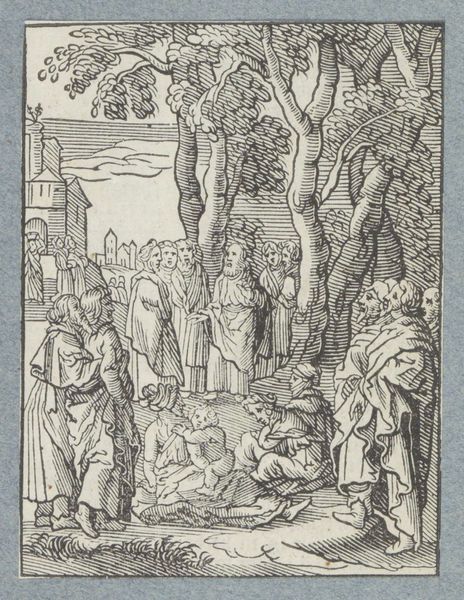
print, paper, ink, engraving
#
narrative-art
#
baroque
# print
#
pen sketch
#
landscape
#
paper
#
ink
#
history-painting
#
engraving
Dimensions: height 109 mm, width 73 mm
Copyright: Rijks Museum: Open Domain
Curator: This print, created before 1646 by Christoffel van Sichem the Younger, is titled “Paulus op Malta,” depicting Paul on Malta. It's an engraving on paper currently held in the Rijksmuseum. Editor: My first impression is a sense of organized chaos, perhaps? There are so many figures crammed into the frame, balanced by the strong diagonal lines leading the eye from the rocky outcrop to the ship struggling in the waves. It feels…dramatic. Curator: The drama aligns perfectly with the baroque style. Look at the heightened emotion in the figures' gestures, the emphasis on movement as the people try to reach the shore or struggle in the sea, their vulnerability visible in their facial expressions. Knowing this represents the biblical account of Paul's shipwreck on Malta contextualizes that drama further, marking Paul's narrative and those of others also facing peril and uncertainty. Editor: It's fascinating how Sichem uses symbolic imagery here, consciously or not. The snake, I assume, represents the serpent that bit Paul but which he miraculously shook off unharmed, thus showing his god-given authority and the symbolic importance of being close to Christ and of his protection in moments of weakness. Note also the wrecked ship itself, a symbol of disruption but, ultimately, deliverance, a common signifier found within historical, social, and political memory for societies. Curator: It definitely speaks to broader historical themes too. Shipwrecks as metaphors for displacement, vulnerability... the reliance on community when faced with uncontrollable forces. Who is offered help and how, who is cast aside or further threatened? Sichem uses Paul’s biblical account here but such incidents would not be confined to this one historical case. Editor: And how interesting to find the theme explored within landscape style art. What we get is that sense of awe within the scene. Notice that we're meant to feel small by its composition; we can really see those historical and narrative aims playing off each other. It speaks to the broader human condition, the shared reliance of faith as hope but in also one another as the solution. Curator: A very insightful approach to its interpretation! Seeing the work in relation to broader issues such as reliance on community definitely encourages dialogue with both art history and social theory to situate artworks in narratives focused on identity, and society itself. Editor: Indeed. Art unlocks meaning from symbolism that endures in culture and society and our job is to decipher that and, also, find meaning that speaks to us individually.
Comments
No comments
Be the first to comment and join the conversation on the ultimate creative platform.
